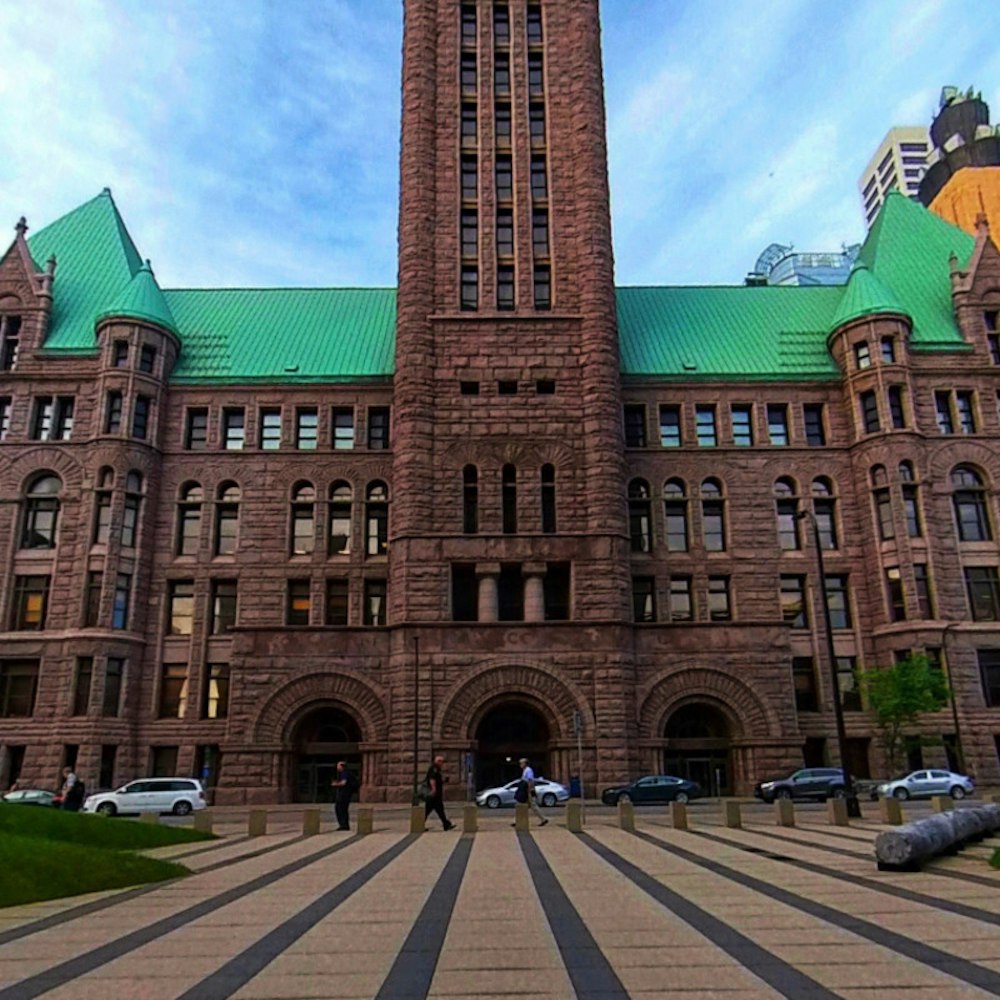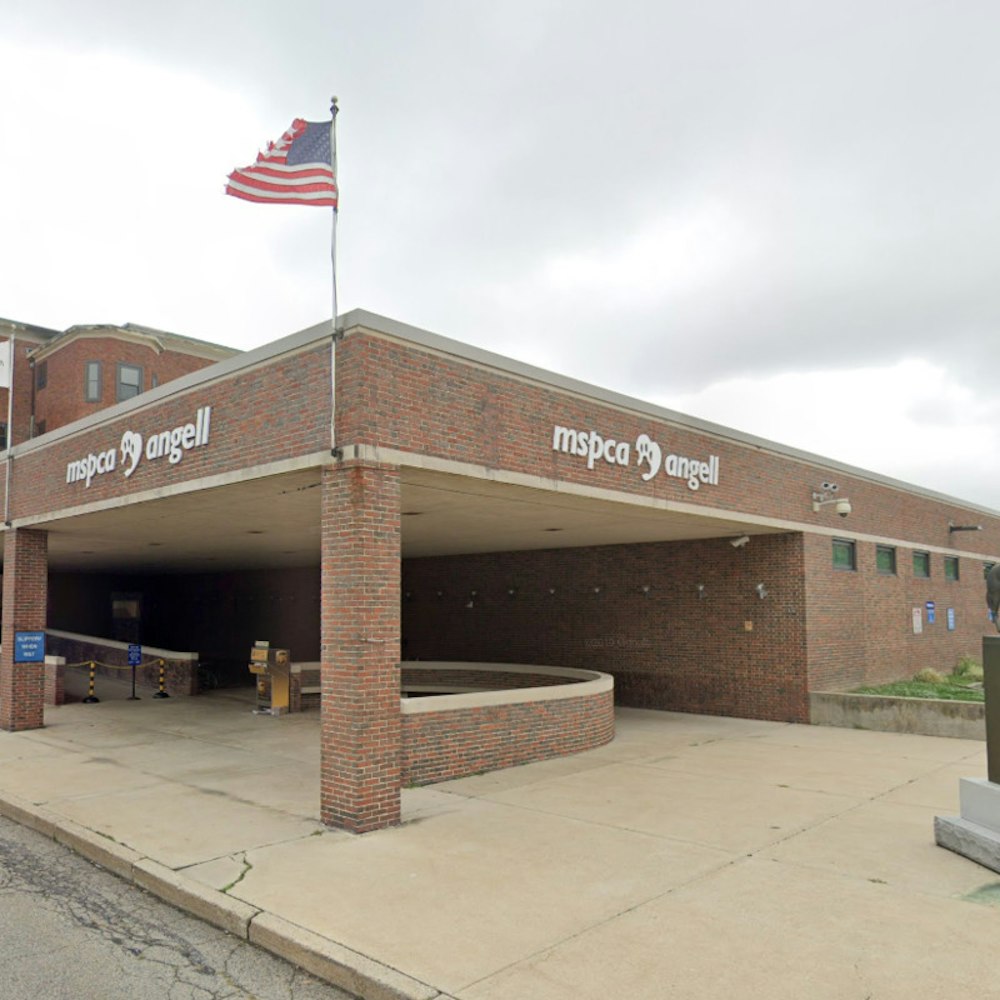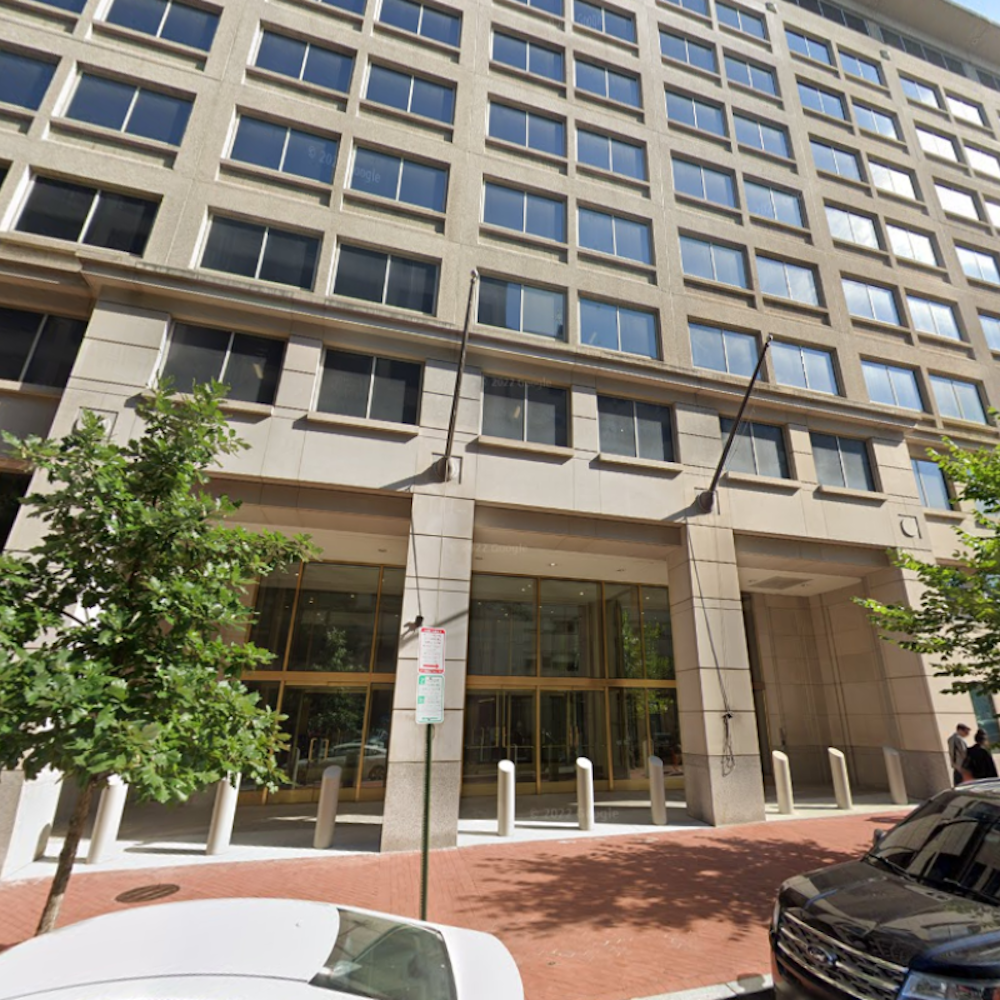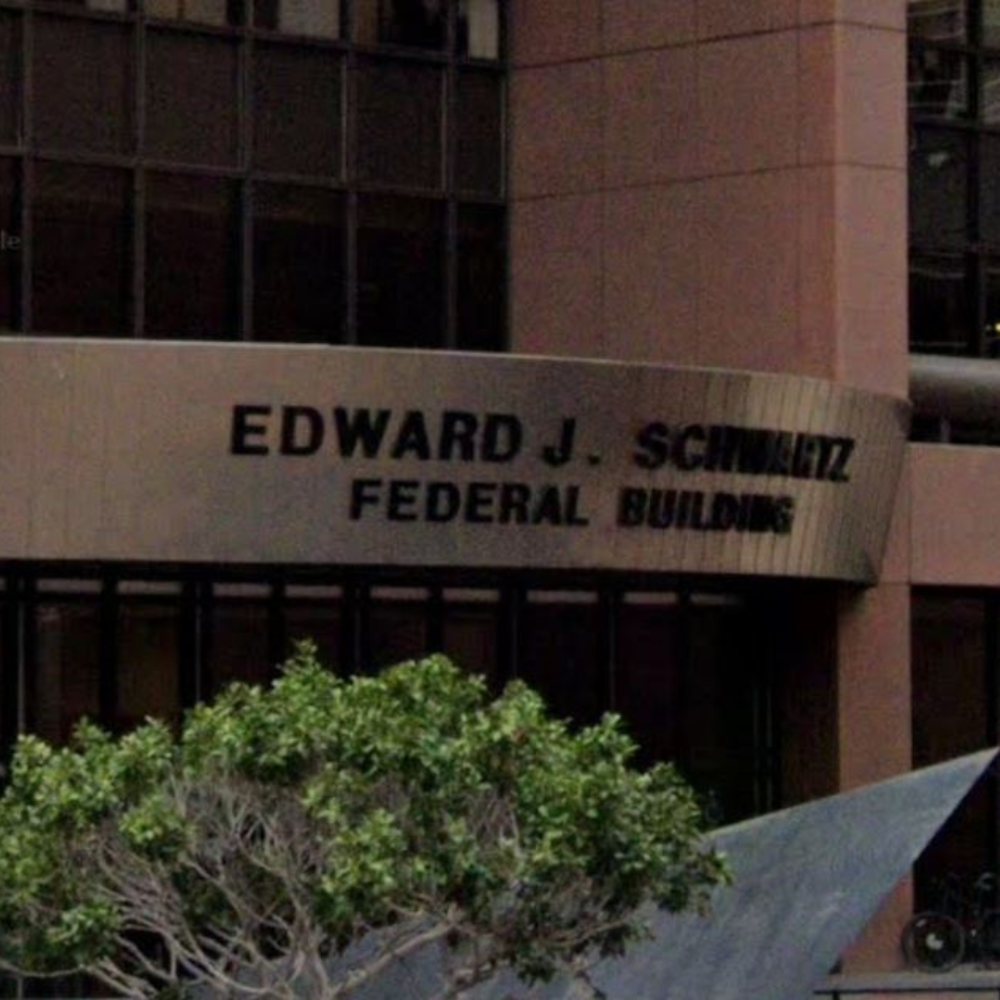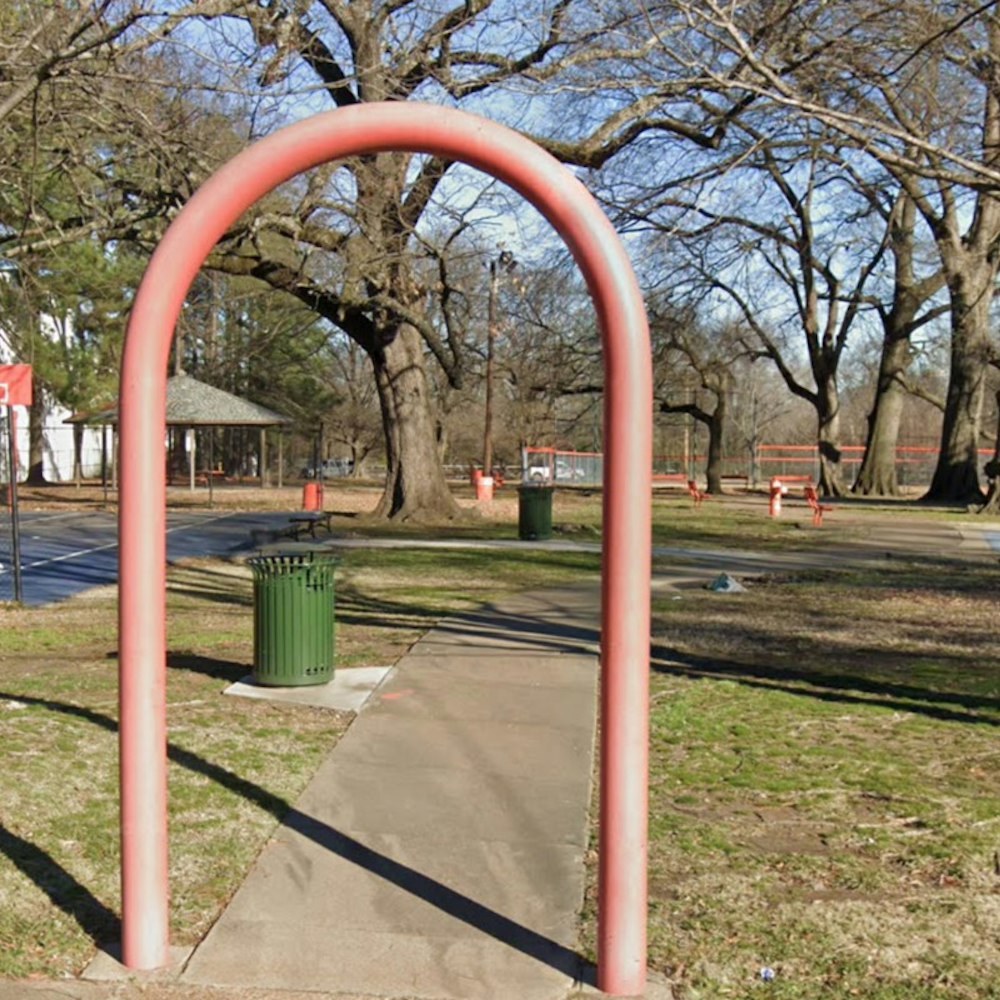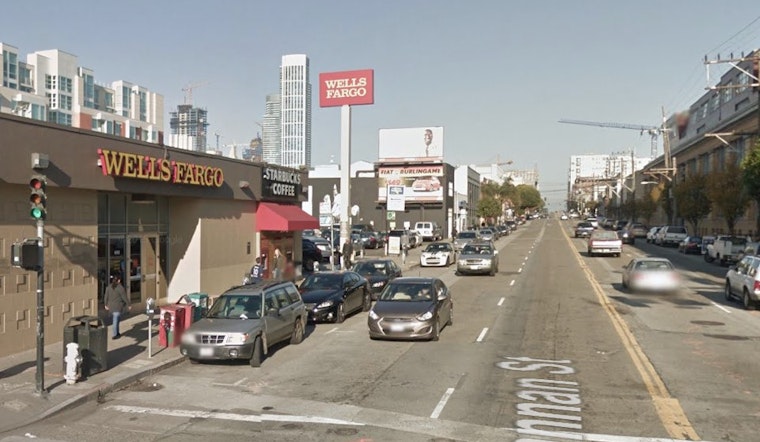
More than four years in the making, the Central SoMa Plan—which aims to turn a mostly industrial section of SoMa into a high-density, mixed-use neighborhood that can accommodate growth over the next several decades—is expected to go into effect by the end of 2016.
As the plan makes its way through the environmental review process, the Planning Department gathered neighbors last Wednesday for a first look at how the plan's $900 million in community benefit funds could be used to improve living conditions in the quickly evolving neighborhood.
On the heels of the approval of the controversial 5M project, the room was full of community members eager to hear how their neighborhood, now considered one of the most desirable real estate markets in the city, would be transformed. As it turns out, the Planning Department had not one proposal for how to allocate the money, but five.
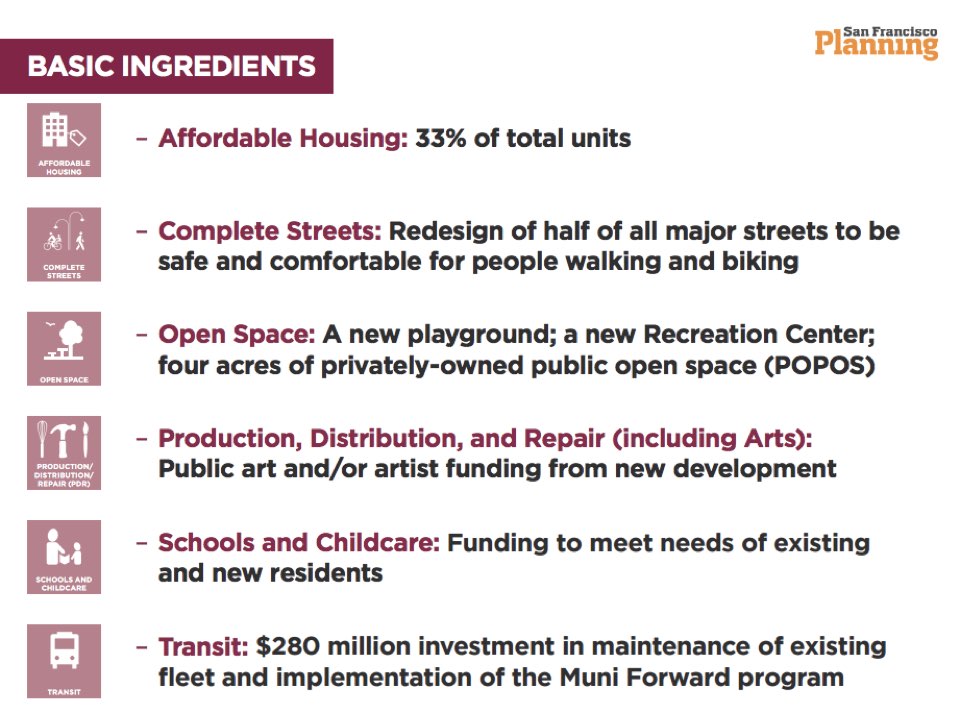
The neighborhood's top priorities and additional needs, as outlined by the Planning Department during Wednesday's presentation.
In total, the Central SoMa Plan is expected to generate a total of $2 billion in public benefits, although $1.1 billion will go toward impact fees and other existing requirements. That leaves about $900 million to be allocated among the priorities the Planning Department has identified so far.
“It’s tricky,” explained Steve Wertheim, project manager for the Central SoMa Plan. “We want to get the requirements just right in order to maximize the public benefits while still attracting development.”
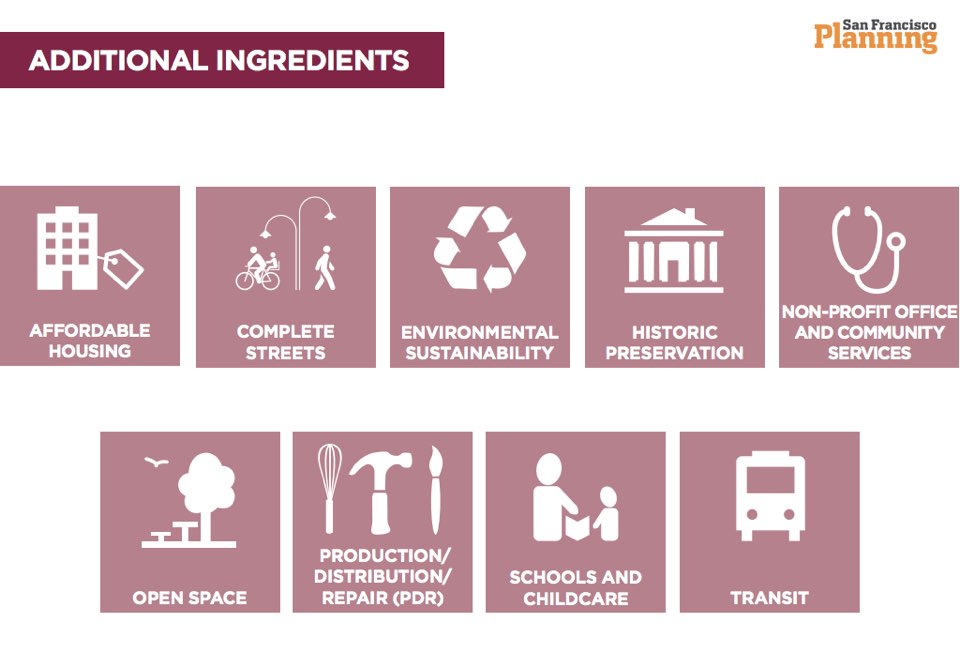
Each of the four distinct plans has a unique emphasis, serving as a template community members can appropriate to build their own plan. Using a restaurant menu theme, Wertheim said that each plan reflected a different recipe of public benefits: all composed of the same ingredients, but in varying amounts.
The first plan (or entrée, in the night’s parlance) places its emphasis on residential diversity via affordable housing, allocating a full 40 percent of new units toward below-market-rate residencies. It would also include 60,000 square feet of protected space for nonprofit and community services, $163 million toward transit expansion and maintenance, a redesign of all major streets, nine acres of neighborhood park space, and a host of environmental improvements throughout.
The second plan, nicknamed the “Economic Diversity Stew,” would preserve all 900,000 square feet of currently protected PDR (production, distribution, and repair) space. It would also increase the space for nonprofit and community services to 400,000 square feet, and put aside funding to renovate and maintain the Old Mint, as well as 55 other historic buildings. However, there would be much less funding for environmental improvements, street redesigns and other amenities. The additional investment towards transit expansion, for instance, would drop to just $70 million.
For those who want to see more money go towards environmental and transit improvements, the third plan, “Green and Mobile Lasagna,” includes $287 million toward the expansion and maintenance of Muni, as well as the implementation of an array of environmental programs, such as waste-efficient new buildings, green habitat development for people and wildlife, improvements to air quality and noise, and much more. This plan also includes a comprehensive street redesign.
Finally, the “Sampler Platter” is designed for a community that cannot decide on a single priority. It has a little bit of everything, including $161 million toward transit improvements, 750,000 square feet of protected PDR space, 60,000 square feet of protected nonprofit and community services space, a new one-acre park, and funding toward historic building preservation, environmental sustainability, and street redesign.
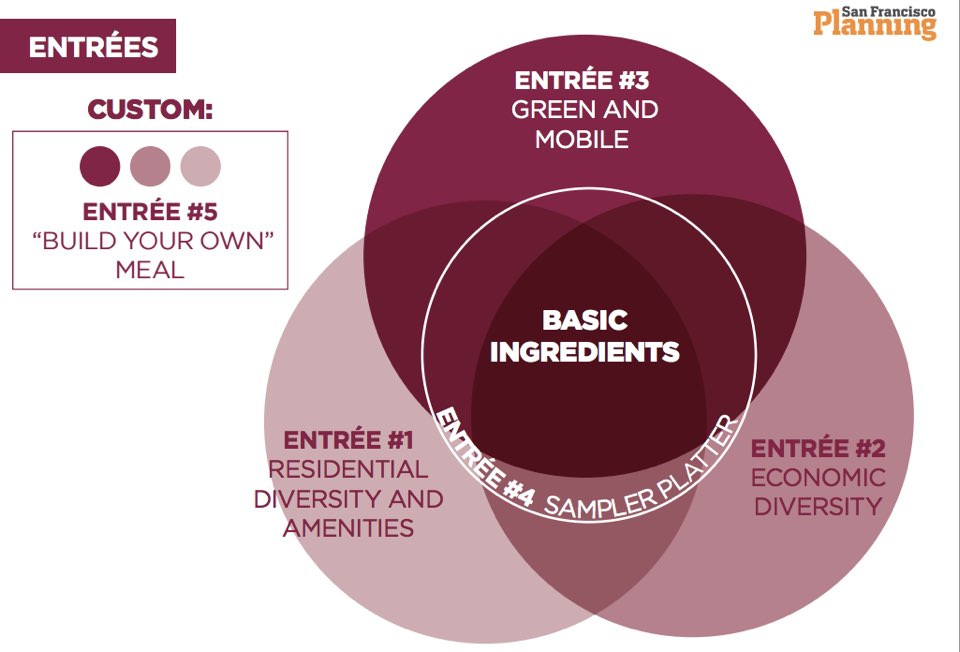
Recognizing that no one plan will appease everyone, Wertheim invited audience members at Wednesday's meeting to submit their own plans, dividing up the available ingredients as they saw fit. Over the next hour, Planning Department employees stood by placards of the plan's details, diligently answering questions and listening to neighbors' feedback. While it was clear that everyone had an opinion about the direction the department should take, a consensus had yet to emerge.
“Unfortunately," acknowledged Gina Simi, the Communications Manager of the Planning Department, "there are sacrifices to each of the proposed benefits.”
However, with the environmental impact review still underway, the plan likely won't be submitted for approval for at least a year. That means plenty of time remains for neighbors to share their thoughts on the proposed community benefit menus. Simi encouraged residents to read more about the plan online, then email Wertheim at steve dot wertheim at sfgov dot org or call (415) 558-6612.
They'd also love neighbors to show up in person to their next open house (to be scheduled) and introduce themselves. “Our goal is to get feedback,” said Simi. “We want to know what people want.”


